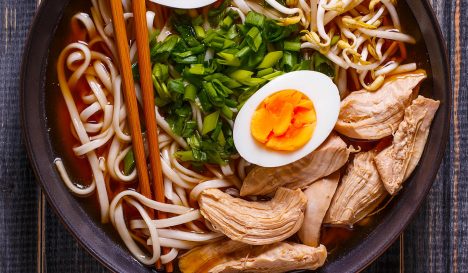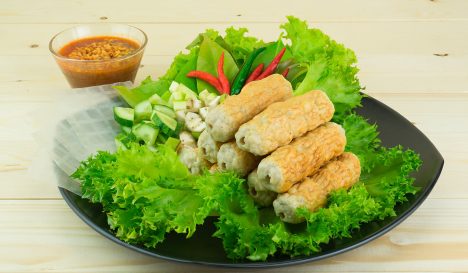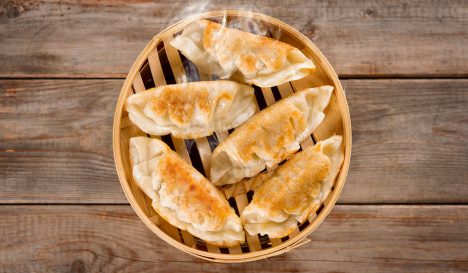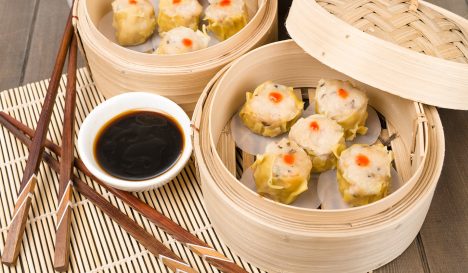Gyoza
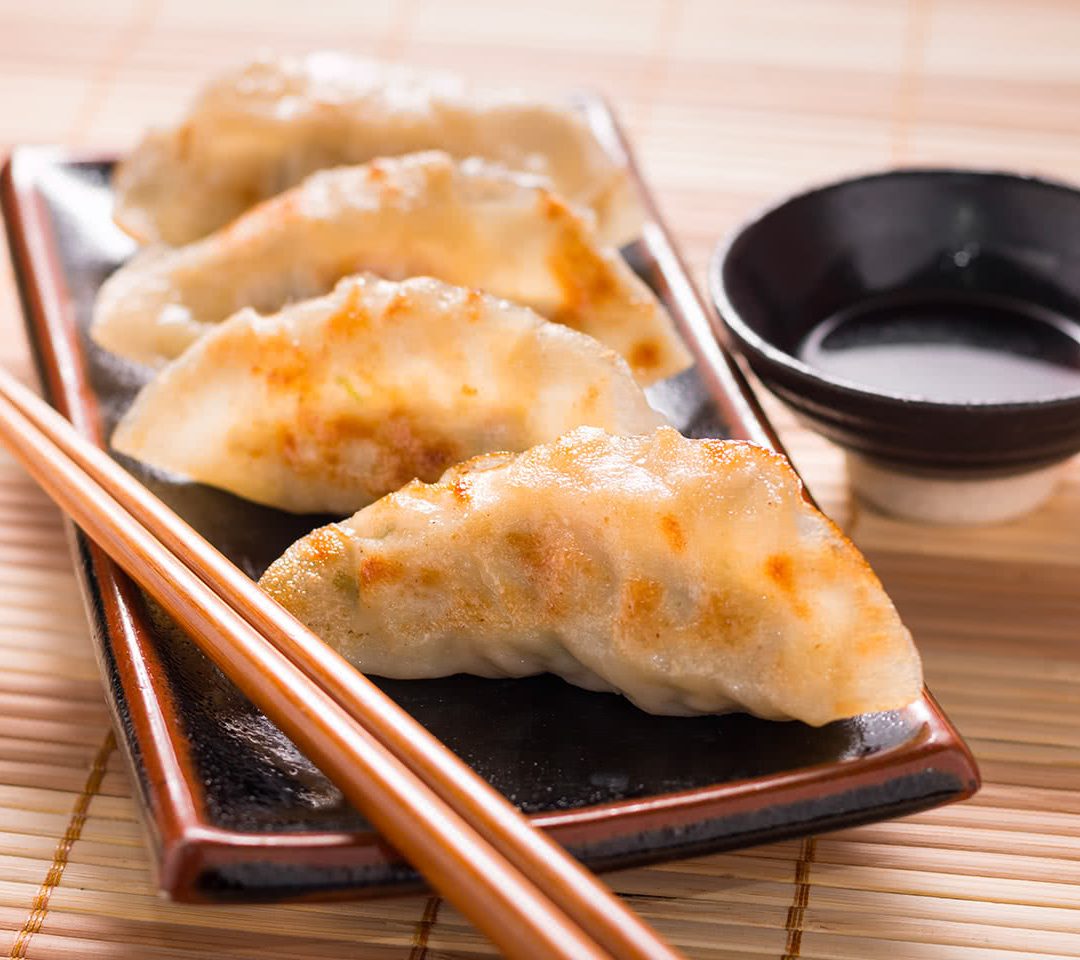
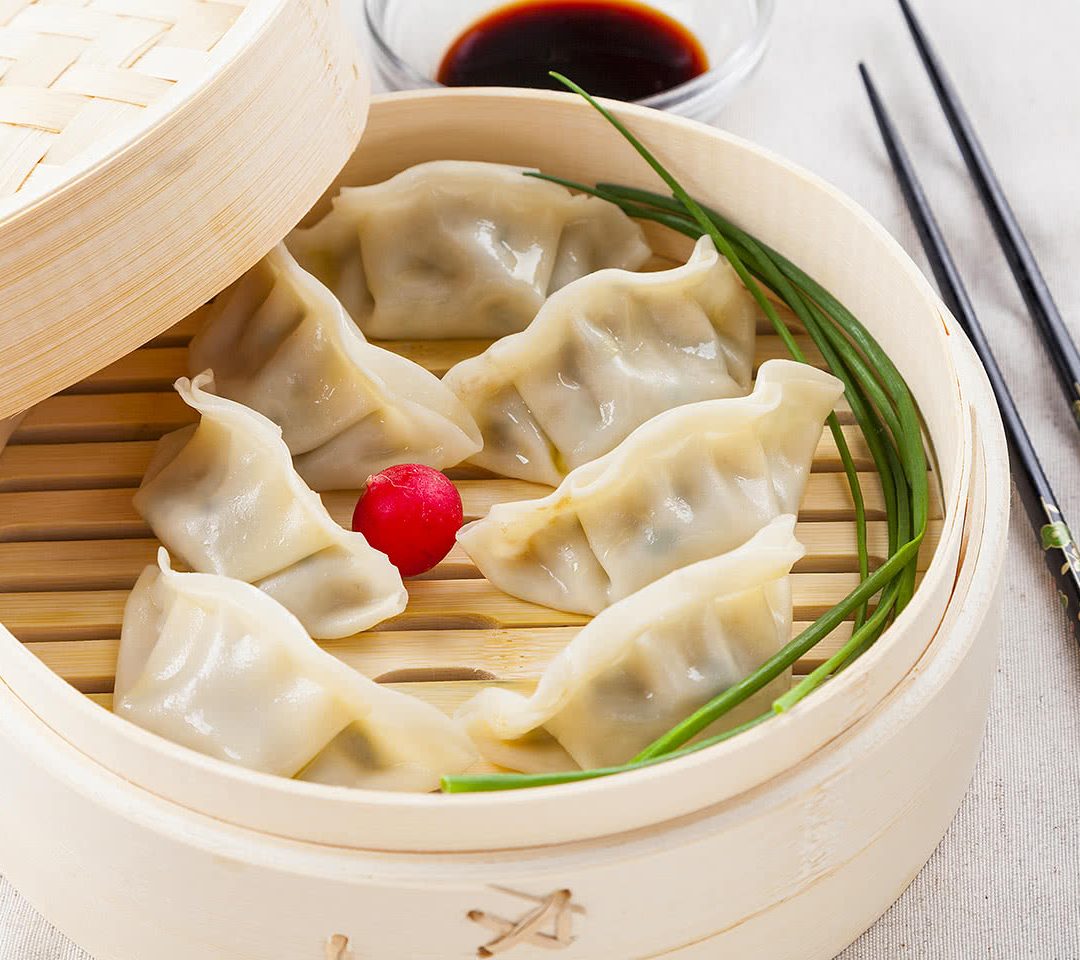
Gyoza
-
Kitchen Japanese cuisine
-
Allergens Gluten-containing cereals
-
Basis Dough / batter
-
Dish type Side dish
-
For who Dumpling lovers
What are gyoza?
Gyoza (pronounced “gee-oh-zah”) are Japanese dumplings or small filled dough parcels. A thin, stretchy dough made from wheat flour is stuffed with a juicy meat and cabbage filling, seasoned with garlic, ginger and Chinese chives. Authentic dumplings are first pan-fried and then baked until they are just crispy.
The Japanese borrowed the idea for their dumplings from the Chinese, the inventors of the dumpling, called jiaozi in China. Japanese soldiers came into contact with the Chinese dough parcel during the occupation of Manchuria in the Second World War and copied it after coming home. The name, gyoza is simply “jiaozi”, pronounced in a Japanese way.
There are differences between Japanese gyoza and Chinese jiaozi. The Japanese dumplings are usually made with a prepackaged dough sheet that is thinner and smaller than the Chinese precursor. The Japanese filling is also usually a bit more delicate. The thin dough sheet ensures a crispy package. The filling often contains a lot of garlic, an ingredient that you rarely come across in Japanese cuisine, except in ramen.
The filling in its authentic form often consists of pork and cabbage, though there are plenty of exceptions to this rule. Beef and carrot, lamb with mint, shrimp with cream cheese or duck confit are all possible fillings. There are also vegetarian fillings. The most important thing is that the filling is relatively dry so that the dumplings do not get soggy when they are in the pan.
How to make gyoza
For classic gyoza filled with minced pork and cabbage, salted and drained cabbage is kneaded with minced pork, fresh ginger, garlic and nira (Chinese chives) or spring onion. All ingredients must be very finely cut for an extra elegant filling. The kneading ensures a nice juicy filling that doesn’t get too dense in texture and seems almost elastic, which is preferred in Asia.
Every round gyoza wrapper gets a teaspoon or two of filling and is closed in a half-moon shape and folded up neatly.
Although gyoza can be baked (sui gyoza), steamed or fried (age gyoza), the most authentic method of preparation is the potsticker approach called yaki gyoza. The dumplings are first pan-fried until the top sides are crispy. Then some moisture is added, a lid is put on and the dough packages are cooked through. Finally, they are baked for a while until they crisp up.
How to eat
The dumplings are served with the crispy side up and a dip made of rice vinegar, shoyu (soy sauce) and chilli or roasted sesame oil. You eat them with chopsticks.
Please consider
Gyoza is often served with a portion of ramen in Japan – a delicious combination that is well worth trying.
Also try
Vietnamese nem nuong or pork meatballs also have that typically Asian firm but tender meat texture.

